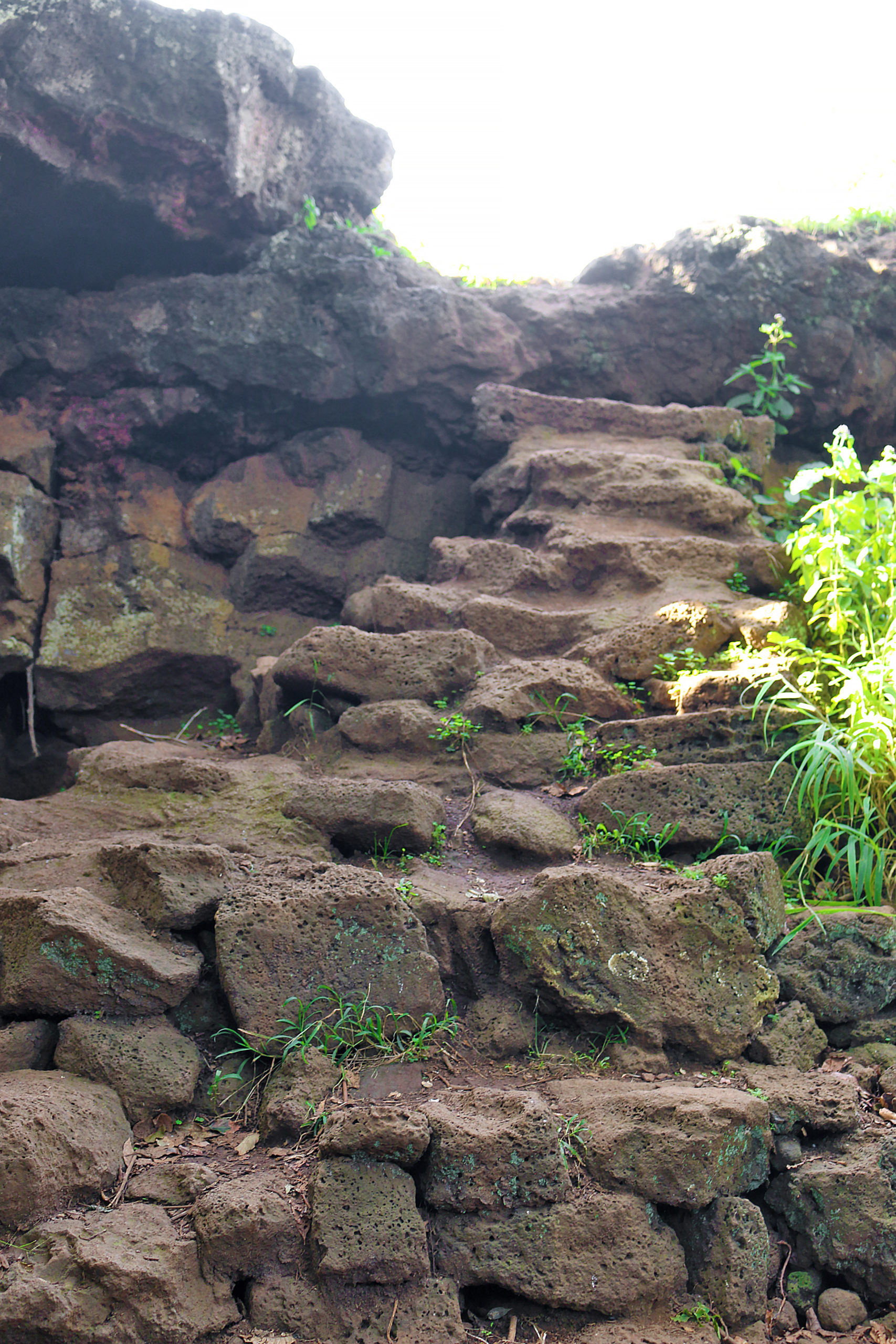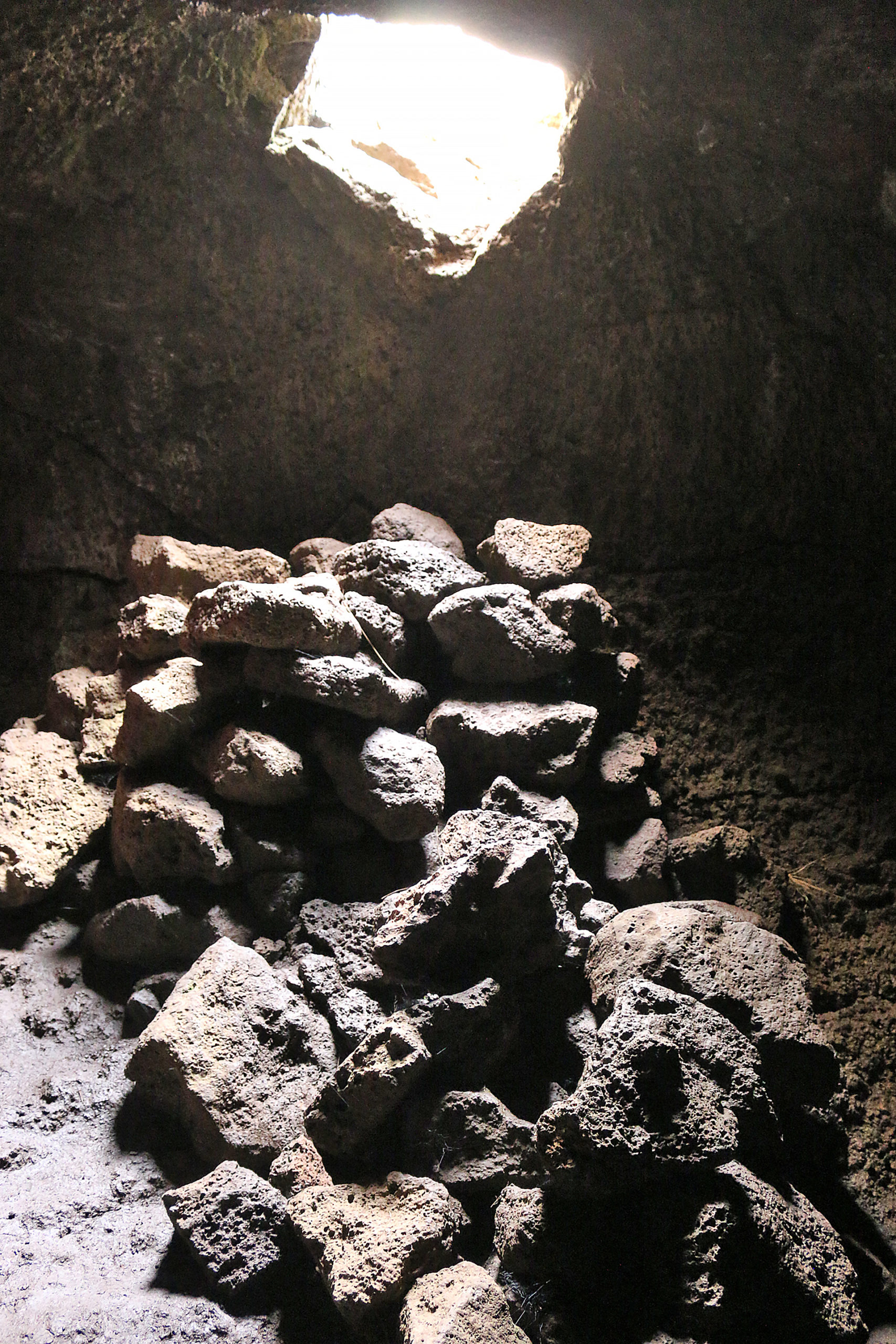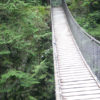Easter Island is best known for the unique ancient Moai statues which grace the entire island; but the remote place — which is also known as Rapa Nui in Polynesian and Isla de Pascua in Spanish — has other not-so-secret surprises in store for visitors: Ana Te Pahu, as Easter Island is not only about those statues.
Ana Te Pahu: Easter Island is Not Only About Statues

Visitors would never know upon first glance of the trees that they have arrived near the entrance to a cave…

…until seeing the sign which has the words Sector Ana Te Pahu on it.

Ana Te Pahu is known as the cave of the banana trees due to their presence both inside and outside of the cave.

Roughly translated in English as the cave of the drum, Ana Te Pahu is the largest cavern on the island which was created out of a lava tube.

Once inside the large room — which is not exactly cavernous — and only a few steps from the entrance, visitors are greeted by a stone structure which resembles a bed or a grave. Even though the rectangular formation — which was constructed with stones — resembles a bed or a mattress, it is not thought to have been used for that purpose or functionality, as the ancient Rapanui people typically slept directly on the ground on a bed of mats or grass and used a smooth stone as a pillow; and they covered themselves with a layer of vegetable tissue known as mahute if the temperature was cool. Its actual distinction is still not definitively known to this day — although it is thought to be one of several stone barriers, which were designed to protect the cave.

The small entrance which is located to the right of the rock stairway is thought to have been protected and reinforced with large stones which formed a narrow passageway in order to increase the difficulty of accessing the interior of Ana Te Pahu — thus improving its security. The remains of old stone ovens — which are known as umu pae — is thought to be where inhabitants of Ana Te Pahu cooked their food in ancient times.

Openings in the ceiling of the cave — which was used as a dwelling of shelter — were caused by collapses of material, which in turn prevented smoke from accumulating inside.

Fauna grows inside areas of the cave near openings to the outside.

Ana Te Pahu is thought to be formed by several underground chambers which are interconnected whose combined total route network is greater than seven kilometers in length.

Note that as is common in many caves, the original entrance was modified and reinforced with large stones — both rough and carved — resulting in a safer place in which to venture inside.

Flora — other than banana trees — flourish immediately outside of Ana Te Pahu.

Ana Te Pora — which is the topic of this article here at The Gate With Brian Cohen — has several entrances and exits which forms part of a greater system of caves of the sector which is known as Roiho, whose largest cave is Ana Te Pahu.

Despite the modifications and reinforcements, the caves may still be unstable, as they could collapse at any moment. There is no guarantee of your safety.

These types of caves — which are known as ana kionga, which generally means refuge cave — were used as shelters or hideouts in times of war; and many legends indeed refer to the use of these caves as hideouts during times of war.

Near this opening of the cave is the lushness of some of the flora which naturally grows here.

Venturing inside further, the cave narrows further and becomes almost completely dark. Crouching down to advance further beyond this section is required as the ceiling becomes lower — and I did bump my head accidentally against the hard ceiling while exploring the lava tube…

…and you will need a flashlight or the light of your portable electronic device to help guide yourself through the dark lava tube — until you see light coming in from outside at the other end of the cave, as the tunnel leads to one of the exits of Ana Te Pahu.

Once reaching the farthest opening of Ana Te Pahu, one must climb a pile of huge and heavy — yet unsteady — pile of stones. You can extricate yourself from the lava tube through this hole by doing some climbing on the stones, if you are capable enough to do so — or another option is to return by the same path to the main entrance.

My sneaker is used as a point of scale to show how large are these stones — or, perhaps more appropriately: boulders.

Only a few visitors choose this option because it requires dealing with truly dark, narrow and claustrophobic stretches before reaching the end — but the scenery is considered as a reward for the effort — although the solid stone which surrounds the vertical opening is steep and mostly sheer, with few areas onto which one can hold or step.

Final Boarding Call
Ana Te Pahu is not represented on Google Maps; but it is located approximately 1.5 kilometers from Ahu Akivi, and it is easy to get there after a short walk of approximately 15 minutes. Ana Te Pahu is part of the Te Ana circuit of caves which include Ana Te Pahu, Ana Te Pora, and Ana Kakenga.
You can use a motor vehicle to get yourself within the vicinity of Ana Te Pahu; but access beyond the only road in the area is by either walking or using a bicycle.

Remember that Ana Te Pahu is part of Parque Nacional Rapa Nui — which is the national park of Easter Island — and you must present your ticket at the checkpoint prior to entering. You will need to pay $80.00 in United States dollars just for admission into the areas of the national park; and the ticket may be purchased either on arrival at the airport or in the center of town of Hanga Roa, which is the only municipality on Easter Island.
Ensure that you please leave cultural features exactly as you find them during your visit.
Please refer to the Easter Island: Itinerary and Master Guide article — which is still a work in progress — for links to other articles at The Gate With Brian Cohen which pertain to Easter Island.
All photographs ©2019 by Brian Cohen.

